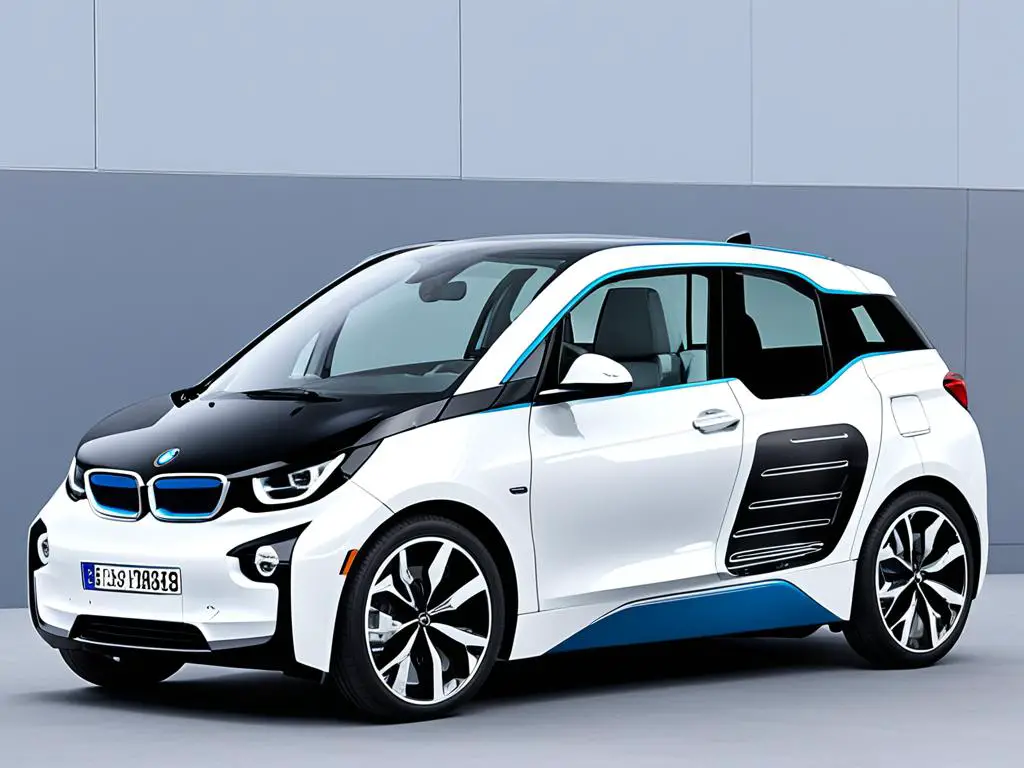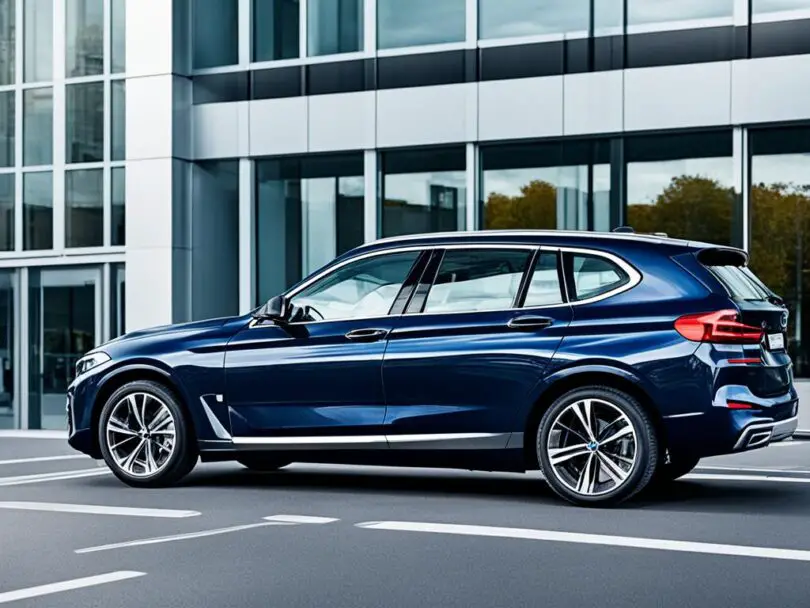Redefining Accessibility: BMW’s Holistic Approach
Inclusive Ecosystem Development
BMW’s commitment to inclusivity extends beyond vehicle design to encompass the development of inclusive infrastructure and policies. Collaborating with stakeholders across sectors, BMW aims to create a more inclusive ecosystem where mobility is accessible to all.
Partnerships for Impact
Recognizing the power of collaboration, BMW actively seeks partnerships with like-minded organizations, startups, and innovators. By pooling resources and expertise, BMW aims to co-create solutions that address the diverse needs of individuals with disabilities, driving meaningful progress towards a more inclusive future.
Fostering Community: Empowering Through Education and Advocacy
Awareness and Education Initiatives
In addition to their design and technological efforts, BMW engages in community engagement, education, and advocacy initiatives. Partnering with advocacy groups, educational institutions, and government agencies, BMW raises awareness about the importance of inclusivity in transportation and inspires future generations to drive positive change.
Amplifying Voices: Collaboration with Stakeholders
BMW actively seeks feedback from individuals with disabilities, caregivers, and advocates to inform their design process. By incorporating user insights, BMW ensures that their vehicles evolve to better meet the needs of their diverse customer base, fostering a culture of continuous improvement and inclusivity.
Looking Ahead: BMW’s Vision for Inclusive Mobility
Future Perspectives
Looking towards the horizon, BMW remains committed to advancing inclusive mobility solutions. They envision a future where accessibility is integral to transportation design and infrastructure. Through ongoing efforts in design, technology, advocacy, and collaboration, BMW continues to pave the way towards a future where mobility is truly inclusive, empowering, and accessible to all.
Key Takeaways:
- BMW is committed to creating inclusive and accessible vehicle designs.
- Their inclusive design approach focuses on enhancing mobility for all individuals.
- Ergonomic design and intuitive interfaces make BMW cars accessible to everyone.
- Advanced technologies and assistive features empower individuals with different abilities.
- BMW’s commitment to inclusivity extends to customizable seating options and adaptive driving aids.
In this section, I will discuss BMW’s approach to inclusive and accessible design in their vehicles, focusing on enhancing mobility for all individuals. BMW is dedicated to providing mobility solutions that cater to people with varying physical abilities, making their cars accessible to a wide range of users.
BMW believes in inclusive automotive design, where every individual can experience the joy and freedom of owning and driving a vehicle. Their accessibility initiatives are driven by the goal of creating a world where mobility is not limited by physical limitations.
One of the key aspects of BMW’s inclusive design approach is their commitment to inclusive mobility. They understand that everyone should have equal access to transportation and strive to make their vehicles accessible to individuals with varying mobility needs. BMW achieves this by incorporating innovative design features and cutting-edge technologies into their cars.
Integrating Inclusive Design Features
BMW’s inclusive automotive design focuses on creating vehicles that are user-friendly and cater to diverse needs. They prioritize comfort, safety, and ease of use to ensure a seamless driving experience for all individuals.
BMW’s commitment to inclusive mobility is evident in their advanced seating solutions. They offer adjustable seats with customizable settings to accommodate individuals with different body types and physical needs. These seats provide optimal support and comfort for a wide range of users.

Furthermore, BMW pays attention to the design of their interiors, ensuring spaciousness and ease of access. They design their vehicles with wide door openings, ample legroom, and sufficient headspace, allowing individuals with mobility challenges to enter and exit the car with ease.
Additionally, BMW embraces technology to enhance accessibility in their vehicles. They integrate intuitive interfaces that are easy to navigate, ensuring that individuals with varying abilities can operate the car’s functions effortlessly. Advanced assistive technologies such as voice control, gesture recognition, and adaptive driving assistance systems further enable inclusive mobility.
Accessible Vehicle Designs by BMW: Features for Everyone
When it comes to creating accessible vehicle designs, BMW goes above and beyond to ensure that their cars are inclusive for all individuals. From the moment you step inside a BMW, you will notice the thoughtful design elements that prioritize comfort and accessibility.
The spacious interiors of BMW vehicles provide ample room for easy maneuverability, allowing individuals with diverse physical abilities to enter and exit the car comfortably. The adjustable seating options further enhance accessibility, catering to different body types and preferences.
One of the standout features of BMW’s accessible vehicle designs is the intuitive interface. With user-friendly controls and clear displays, BMW ensures that all users can easily navigate and operate the car’s functions. Additionally, BMW integrates advanced assistive technologies, such as voice commands and gesture controls, to provide a seamless and inclusive driving experience.
Whether you have mobility challenges or simply value a car with inclusive features, BMW’s commitment to accessible vehicle designs ensures that everyone can enjoy the benefits of their exceptional automotive engineering. With ergonomic design, spacious interiors, and advanced technologies, BMW creates cars that truly cater to all users.
Understanding BMW’s Approach to Inclusive Design
Integrating Inclusive Design Principles
BMW’s approach to inclusive design revolves around the core belief that mobility should be accessible to all individuals, regardless of their physical abilities. They prioritize the integration of inclusive design principles throughout every stage of the vehicle development process.
User-Centered Design
At the heart of BMW’s inclusive design philosophy lies a commitment to user-centered design. They actively involve individuals with varying physical abilities in the design process, soliciting feedback and insights to ensure that their vehicles meet the diverse needs of their customers.
Ergonomic Excellence
BMW meticulously engineers their vehicles to offer ergonomic excellence, ensuring that controls, interfaces, and seating configurations are accessible and intuitive for all occupants. From adjustable seating options to easily reachable controls, BMW’s commitment to ergonomics enhances the driving experience for individuals with disabilities.
Leveraging Innovative Technologies
In addition to ergonomic design, BMW leverages innovative technologies to enhance inclusivity in their vehicles. They integrate features such as voice-command systems, adaptive driving aids, and autonomous driving technologies to empower individuals with varying physical abilities to drive with confidence and independence.
Voice-Command Systems
BMW’s voice-command systems enable individuals with mobility impairments to control various functions of the vehicle using voice commands, providing an alternative interface for those who may have difficulty using traditional controls.
Adaptive Driving Aids
BMW offers adaptive driving aids such as steering wheel modifications, pedal extensions, and specialized seating options to accommodate individuals with physical disabilities, allowing them to drive safely and comfortably.
Expanding Partnerships for Impact
To bolster their efforts, BMW actively seeks new collaborations with organizations and individuals who share their commitment to inclusivity. These partnerships span various sectors, including technology, healthcare, and advocacy, ensuring a comprehensive approach to addressing accessibility challenges. By fostering an expansive network of partners, BMW amplifies its impact and accelerates progress towards a more inclusive future.
Driving Innovation Through Co-Creation
In the spirit of co-creation, BMW engages stakeholders to identify unmet needs and co-design solutions that meet the diverse requirements of individuals with disabilities. Collaborative workshops, hackathons, and innovation challenges serve as platforms for brainstorming sessions where diverse perspectives converge, sparking creativity and innovation. By involving end-users in the design process, BMW ensures that its solutions not only meet technical requirements but also address real-world challenges faced by individuals with disabilities.
- Hackathons: BMW organizes hackathons where developers, designers, and individuals with disabilities come together to prototype new solutions for inclusive mobility. These events serve as incubators for innovation, fostering a culture of experimentation and collaboration.
- Innovation Challenges: BMW issues innovation challenges inviting startups and entrepreneurs to propose groundbreaking solutions for enhancing accessibility in transportation. Offering resources, mentorship, and potential partnerships, BMW empowers innovators to bring their ideas to life and drive positive change in the industry.
Empowering Through Education and Advocacy Initiatives
BMW’s commitment to inclusivity extends beyond product design to encompass education and advocacy initiatives that raise awareness and drive systemic change. Through partnerships with educational institutions, community organizations, and government agencies, BMW delivers workshops, training programs, and awareness campaigns empowering individuals to advocate for inclusivity in their communities.
- Accessibility Workshops: BMW conducts workshops on inclusive design and accessibility best practices for designers, engineers, and urban planners. These workshops provide participants with the knowledge and skills needed to incorporate inclusive principles into their work, ultimately leading to more accessible products and environments.
- Training Programs: BMW offers training programs for dealership staff and service technicians, ensuring individuals with disabilities receive the support and assistance they need when purchasing and servicing their vehicles. By educating frontline staff, BMW enhances the overall customer experience and fosters a culture of inclusivity within their dealership network.
- Awareness Campaigns: BMW collaborates with advocacy groups and influencers to launch awareness campaigns highlighting the importance of inclusivity in transportation. Through social media, events, and media partnerships, BMW amplifies the voices of individuals with disabilities and advocates for policy changes promoting accessibility and equality.
Continuous Improvement and Feedback Loop
BMW recognizes inclusivity as an ongoing journey of continuous improvement, establishing a robust feedback loop soliciting input from customers, advocacy groups, and industry experts. Actively listening to the needs and concerns of their diverse customer base, BMW ensures their vehicles evolve to better meet the needs of individuals with disabilities, fostering a culture of collaboration and innovation driving meaningful progress towards a more inclusive future.







